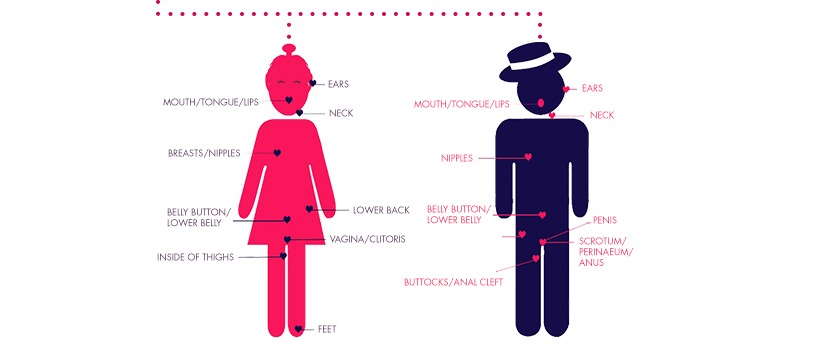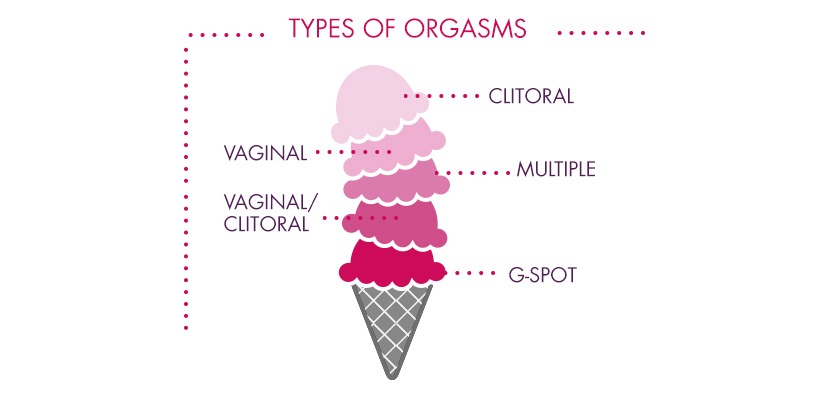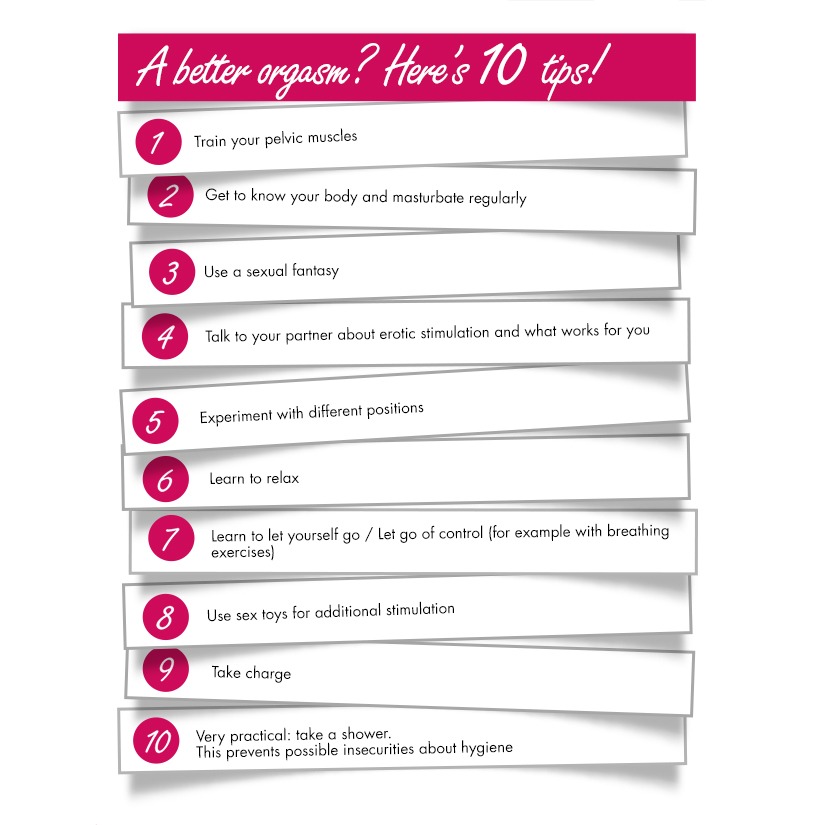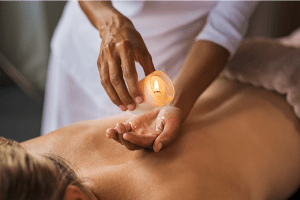
How can I get an orgasm?

If you want to reach an orgasm, women need constant, uninterrupted stimulation. If the stimulation stops, the tension of building up towards an orgasm stops as well and you can start over. That is why it is sometimes difficult for women to reach an orgasm during sex. If the stimulation is interrupted even a little bit, the odds of an orgasm immediately decrease.
What is an orgasm?
An orgasm is a reflex/reaction based on stimulation of the clitoris. During an orgasm the muscles in the vagina contract (deep inside) and it feels like a sequence of intense, powerful vibrations. The intensity of the orgasm will differ every time. This is connected to, for instance, your level of relaxation. If you’re stressed, then you (usually subconsciously) suppress your orgasm and it’s less intense than when you’re completely relaxed.
Know your erogenous zones
An erogenous zone is an area of the human body that can arouse sexual feelings when touched. Erogenous zones differ for men and women, but also for each person. Where they are? In women there are the following erogenous zones:

Types of orgasms
♥ Clitoral
Stimulating the clitoris is essential in order to reach an orgasm. Clitoral stimulation results in better saturation (swelling) and a moist vagina. During continuous stimulation the entire area becomes more sensitive and some women feel the orgasm (the contractions) in their vaginas.
♥ Vaginal
Most women know a clitoral orgasm. A vaginal orgasm is as of yet still something of a mystery. Does it even exist? And if so, what does it feel like? Is ejaculation in women a result of a vaginal orgasm? For most women, vaginal stimulation in addition to clitoral stimulation strengthens the sensitivity. Whether the resulting orgasm can be called a “vaginal orgasm” is the question. Apparently the clitoris is a lot bigger than most people think and is also partially “internal”. This part is what you feel during a vaginal climax.
♥ Vaginal & Clitoral
A vaginal climax thanks to clitoral stimulation is known territory for most women. As we already discussed under “vaginal orgasm”, it’s debatable whether you can differentiate between clitoral and vaginal orgasm. In any case, with simultaneous vaginal and clitoral stimulation you will reach an unprecedented climax and you can feel it contract “deeper” inside your body. A wonderful orgasm thanks to stimulation of both erogenous zones.
♥ G-spot
The G-spot is a different story. This spot is located about 5 cm deep in the vagina and feels a little spongy. Please note: you have to be already aroused in order to be able to feel the G-spot. The G-spot swells as the arousal grows. A G-spot orgasm is different than a clitoral orgasm. The build-up is slow and the orgasm feels like a discharge in a very large area. It’s very deep and runs from your spine to the top of your stomach. Many women aren’t sure whether they have a G-spot orgasm because the build-up is slower and so is the orgasm.
♥ Multiple
Some women can reach multiple orgasms. This mostly has to do with the training of the pelvic muscles. Strong pelvic muscles can incredibly strengthen an orgasm and make it possible to have multiple orgasms.
♥ No orgasm, now what?
Don’t sweat it. There are many women who aren’t familiar enough with their body or can’t relax enough to get an orgasm. We recommend that you get to know your body, for example by masturbating. Thanks to masturbation you can become very familiar with your body, you’ll learn what you like, where your erogenous zones are and which stimulation works best for you. You can also train your pelvic muscles. Trained pelvic muscles provide an even more intense orgasm and perhaps you can optimize the feeling. Of course, you can always do relaxing exercises. And something else: talk to your partner about what you like and don’t like. That makes it easier for the both of you.
♥ Masturbating is beneficial!
Aren’t sure what an orgasm is? Or aren’t you sure that what you’re feeling is actually an orgasm? Then start with masturbation exercises. It helps! You will get to know your erogenous zones and you can better tell you partner what feels nice and doesn’t feel nice during sex.










Respond or ask a question
0 comments